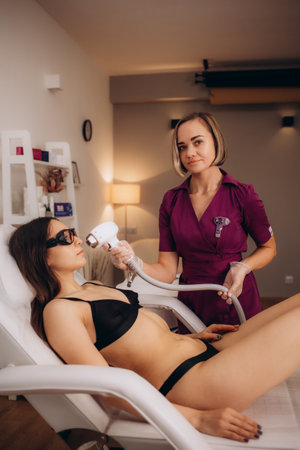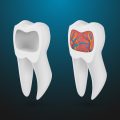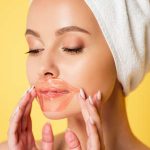Understanding Hair Removal Methods and Their Aftercare Needs
When it comes to hair removal, the method you choose has a significant impact on how your skin feels afterward and the kind of care it needs. Shaving, waxing, sugaring, and laser hair removal are among the most popular techniques in the U.S., but each comes with its own set of aftercare requirements. Shaving is quick and convenient, but can often lead to razor burn or nicks if not done carefully. Waxing and sugaring both remove hair from the root, leaving skin smooth for longer, but they can also cause redness, irritation, or ingrown hairs if the skin isn’t properly cared for post-treatment. Laser hair removal offers a more permanent solution by targeting hair follicles with light energy; however, it may leave your skin sensitive or prone to dryness for a few days after each session. Understanding these differences is key to preventing irritation and ingrown hairs—tailoring your aftercare routine based on the specific hair removal method will help keep your skin healthy, comfortable, and looking its best.
2. Immediate Steps to Take After Hair Removal
Right after your hair removal session—whether it’s waxing, shaving, sugaring, or laser—it’s crucial to treat your skin with extra care to avoid irritation and prevent ingrown hairs. Understanding the do’s and don’ts can make a big difference in your skin’s recovery process and overall comfort.
Do’s: How to Soothe and Protect Your Skin
| Step | Why It Matters |
|---|---|
| Apply a Cool Compress | Reduces inflammation and soothes any immediate discomfort. |
| Use Fragrance-Free Moisturizer | Keeps skin hydrated without causing further irritation. |
| Wear Loose Clothing | Prevents friction on sensitive areas, minimizing the risk of redness and bumps. |
Don’ts: What to Avoid Right After Hair Removal
| Avoid This | Reason |
|---|---|
| Hot Showers or Baths | Heat can aggravate sensitivity and prolong redness or swelling. |
| Scented Products & Deodorants | Chemicals may cause stinging or breakouts on freshly treated skin. |
| Tight-Fitting Clothes | Can trap sweat and bacteria, increasing chances of irritation and ingrown hairs. |
Bonus Tips for Immediate Aftercare
- Avoid touching or scratching the area to prevent bacteria from entering open follicles.
- If redness or bumps appear, consider using an over-the-counter hydrocortisone cream (just check with your dermatologist first).
The Bottom Line
Your post-hair removal routine sets the tone for how well your skin heals. By following these immediate steps and respecting what your skin needs, you’ll minimize the risk of irritation and help keep those pesky ingrown hairs at bay.
![]()
3. Daily Aftercare Routine for Smooth Skin
Maintaining a healthy aftercare routine is key to preventing irritation and ingrown hairs after hair removal. Start by gently cleansing the treated area each day with a mild, fragrance-free cleanser to remove sweat, oil, and bacteria without stripping your skin’s natural barrier. Pat the skin dry—never rub—to avoid unnecessary friction.
Moisturizing is crucial for keeping your skin soft and supple. Opt for lightweight, non-comedogenic lotions or aloe-based gels that hydrate without clogging pores. Products containing soothing ingredients like chamomile, calendula, or colloidal oatmeal can calm redness and reduce post-hair-removal sensitivity. For those prone to ingrowns, consider using a gentle exfoliating product a few times a week. Look for chemical exfoliants with alpha hydroxy acids (AHAs) or beta hydroxy acids (BHAs), as they help clear away dead skin cells that can trap hairs underneath the surface.
Adopting gentle daily habits will also help your skin recover faster. Wear loose-fitting clothing to minimize friction and let your skin breathe, especially in the first 24-48 hours after hair removal. Avoid hot showers, saunas, and swimming pools during this time, as heat and chlorine can aggravate sensitive skin. If you’re heading outside, protect treated areas from sun exposure with broad-spectrum SPF—even on cloudy days—to prevent discoloration and further irritation.
Sticking to these simple routines and using recommended products will keep your skin smooth, healthy, and comfortable between hair removal sessions. Consistency is key—listen to your body, adjust products as needed, and always prioritize gentle care for the best results.
4. Preventing and Treating Ingrown Hairs
Ingrown hairs are a common concern after hair removal, especially for those with curly or coarse hair. They occur when a hair grows back into the skin instead of rising up from it, causing irritation, redness, and sometimes painful bumps. Understanding how to prevent and treat ingrown hairs is essential for maintaining healthy skin post-hair removal.
How to Minimize Your Risk of Ingrown Hairs
There are several strategies you can incorporate into your aftercare routine to reduce the chances of developing ingrown hairs:
| Prevention Tip | Description |
|---|---|
| Exfoliate Regularly | Use a gentle scrub or chemical exfoliant (like AHA or BHA) 2-3 times a week to remove dead skin cells that can trap hairs under the surface. |
| Moisturize Daily | Apply a non-comedogenic moisturizer to keep skin soft and supple, which helps new hairs break through the surface more easily. |
| Avoid Tight Clothing | Wear loose-fitting clothes after hair removal to minimize friction that can contribute to ingrown hairs. |
| Use Proper Hair Removal Techniques | Shave in the direction of hair growth, and avoid going over the same area multiple times. If waxing, make sure the wax is not too hot and always pull in the direction of growth. |
Recognizing Early Signs of Ingrown Hairs
Spotting ingrown hairs early can help you treat them before they become more problematic. Look out for:
- Small, raised red or dark bumps in areas where you’ve removed hair
- Mild itching or tenderness around these bumps
- A visible loop or end of hair trapped just beneath the skin’s surface
Safe Treatment Methods for Ingrown Hairs
If you notice an ingrown hair, resist the urge to pick or squeeze it, as this can lead to infection or scarring. Instead, try these safe at-home treatments:
| Treatment Method | Description |
|---|---|
| Warm Compresses | Apply a warm, damp washcloth to soften the skin and encourage the hair to break through naturally. |
| Gentle Exfoliation | Lightly exfoliate with a soft brush or exfoliating pad in circular motions to free trapped hairs. |
| Tweezers (Optional) | If the tip of the hair is visible above the skin, sterilize tweezers with alcohol and gently lift it out—never dig into the skin. |
| Over-the-Counter Creams | Creams containing salicylic acid or hydrocortisone may reduce inflammation and promote healing. |
When to Seek Professional Help
If an ingrown hair becomes very painful, shows signs of infection (such as pus or severe redness), or does not improve with home treatment, consult a dermatologist for further care. By following these preventative steps and knowing how to address ingrowns safely, you can keep your skin smooth and comfortable after any type of hair removal.
5. When to Seek Professional Help
Most mild irritation and ingrown hairs after hair removal can be managed at home, but it’s important to know when it’s time to see a professional. If you notice severe redness, swelling, pus, or pain that doesn’t improve after a few days, these may be signs of infection or a more serious skin reaction. In the U.S., it’s common to reach out to a dermatologist for persistent issues, especially if over-the-counter treatments aren’t working. Estheticians are also a great resource for advice on post-waxing or post-laser care and can offer specialized treatments if you’re prone to ingrowns or chronic irritation.
Red Flags Not to Ignore
If your skin develops blisters, open sores, or starts oozing, don’t wait—these symptoms need immediate medical attention. Likewise, if you experience spreading rash or fever after hair removal, seek help right away.
Tips to Prevent Complications
To avoid these complications in the first place, always use clean tools, follow aftercare instructions carefully, and avoid picking at ingrown hairs or irritated spots. Don’t try harsh DIY remedies that could damage your skin further. If you have sensitive skin or a history of stubborn ingrowns, consider talking with an esthetician before your next hair removal session about gentler options and tailored aftercare routines.
Takeaway
Listening to your body is key—when in doubt, it’s better to err on the side of caution and check in with a professional. Prompt attention ensures healthier skin and helps you get back to feeling confident and comfortable faster.
6. American Lifestyle Tips for Long-Term Skin Health
Living in the U.S. means balancing busy schedules, diverse climates, and an active lifestyle—all of which can impact how your skin recovers after hair removal. To maintain smooth, irritation-free skin and prevent ingrown hairs, it’s important to tailor your aftercare routine to fit everyday American habits.
Practice Smart Gym Etiquette
If you hit the gym regularly, always wear clean, breathable workout clothes to reduce friction on freshly treated skin. Avoid sharing towels or equipment that comes into direct contact with your skin, as this minimizes the risk of bacterial infections post-hair removal. Shower promptly after exercising to rinse away sweat and bacteria that can irritate sensitive areas.
Prioritize Sun Protection
Sun exposure is a big part of American life, from summer barbecues to weekend hikes. However, your skin is especially vulnerable to UV rays after waxing, shaving, or laser treatments. Always apply a broad-spectrum sunscreen (SPF 30 or higher) on exposed areas—even on cloudy days—to prevent hyperpigmentation and sunburn. Don’t forget often-missed spots like the back of your neck or the tops of your feet if these areas have been treated.
Adapt Your Routine by Season
America’s climate varies widely, so adapt your skincare throughout the year. In winter, use heavier moisturizers and avoid hot showers that strip moisture from newly treated skin. In the summer months, opt for lightweight lotions and reapply sunscreen frequently, especially if swimming or sweating outdoors. Humid environments may require more frequent exfoliation, while drier regions call for extra hydration.
Stay Hydrated and Eat Well
Drinking plenty of water is key for healthy skin regeneration after any hair removal procedure. Enjoying a diet rich in fruits, vegetables, and omega-3s (think salmon or walnuts) also supports healing and reduces inflammation—an easy win for long-term skin health.
Make Aftercare Part of Your Self-Care Routine
Avoid rushing through your aftercare steps. Set aside time to gently exfoliate two to three times a week and moisturize daily as part of your self-care rituals—just like you would with a favorite Netflix show or weekend brunch. With these simple but effective habits rooted in everyday American living, you’ll keep your skin looking its best all year round.


